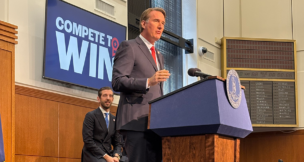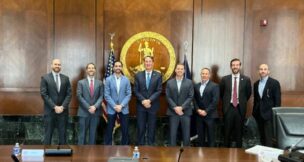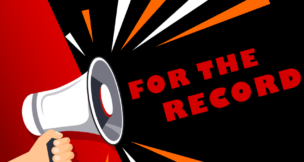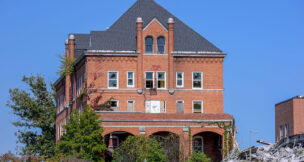COVID roundup: Va. deaths surpass 10,000; 21% of population vaccinated
Virginia exceeded 10,000 coronavirus-related deaths as of March 15, one year and one day after the first COVID-19 death was recorded in the state. Also, 21% of the state’s population — 1.7 million people — have now received at least one dose of a COVID vaccine, according to the Virginia Department of Health. And more […]
Virginians ages 65+ have mostly gotten COVID shots
With more than 1.6 million Virginians having received COVID-19 vaccinations, the number of people age 65 and older seeking COVID-19 shots is beginning to slow down, Dr. Danny Avula said Friday. That has left more appointments open for younger people with health issues or who work in essential jobs. Avula, the state’s vaccine coordinator, said […]
New jobless claims increased last week in Va.
Initial unemployment claims increased across the state last week, while continued claims dropped slightly, the Virginia Employment Commission reported Thursday. For the filing week ending March 6, 13,736 people filed new claims for unemployment insurance, up from 12,155 the previous week. Meanwhile, 62,269 people filed continued claims, marking a 2.7% decrease from the previous week […]
Health Wagon receives COVID-19 vaccine doses after wait
A little more than a month after The Health Wagon’s director went on national television and said the Wise County-based free clinic system hadn’t received COVID-19 vaccine doses, it has now vaccinated 325 people in the past two weeks. In a news release Thursday, The Health Wagon President and CEO Teresa Tyson thanked the Virginia […]
The pandemic — one year later
One year ago this week, Virginians started bumping elbows instead of shaking hands. We raced about trying to find toilet paper and hand sanitizer and began washing our hands obsessively as a virus we’d only heard about in the news suddenly appeared in Virginia and would quickly transform daily life as we knew it. Virginia’s […]
Large-scale vaccination clinics starting next week in Va.
Updated 7 p.m. The state will launch large-scale COVID-19 vaccination clinics beginning next week in Petersburg, Portsmouth and Danville, Gov. Ralph Northam said Tuesday. Curtis Brown, the state coordinator of emergency management, said he expects large clinic events will be held at 13 locations within the next three months, determined by need and funded by […]
COVID roundup: 1 year into pandemic, Va. makes headway with vaccinations
A year after the first COVID-19 cases in Virginia were recorded, the state is making significant headway in vaccinating residents. As of Monday, March 8, 1.49 million Virginians — or 17.5% of the state’s population — have received at least one shot. Meanwhile, the number of COVID-related deaths in Virginia was still higher than average […]
Prince William company to expand manufacturing of COVID-19 test products
Prince William County-based Ceres Nanosciences Inc. will increase manufacturing of its reagent product used in COVID-19 tests, Gov. Ralph Northam announced Wednesday. The project will create 50 jobs in engineering, advanced manufacturing and materials science during the next three years. “This expansion will enable Ceres Nanosciences to vastly increase production of its patented technology to [&[...]
90K Johnson & Johnson shots arriving in Va. this week
More than 90,000 Johnson & Johnson COVID-19 vaccine doses are arriving in Virginia now through Thursday, the state vaccine coordinator said Wednesday afternoon. According to Dr. Danny Avula, 69,000 doses of the one-shot vaccine are heading to local health districts, and retail pharmacies will receive 22,000 doses, which will be administered from Friday through early […]
Lawmakers pass COVID-19 workers’ comp bills
RICHMOND, Va. — The Virginia General Assembly passed multiple bills allowing health care workers and first responders to receive workers’ compensation benefits if they are disabled or die due to COVID-19. “We did it!” Del. Chris Hurst, D-Blacksburg, said in a Twitter post. “Health care heroes who got COVID on the job will get the […]
COVID roundup: Johnson & Johnson vaccine headed to Va. this week
Virginia expects to receive its first allocation of 69,000 COVID-19 vaccine doses produced by Johnson & Johnson this week, along with about 360,000 more doses from Moderna and Pfizer Inc., the Virginia Department of Health announced this weekend. The U.S. Food and Drug Administration approved the Johnson & Johnson vaccine — which requires only one […]
Labor market recovery slowed during early February
Labor market recovery slowed during the week of Feb. 7 through Feb. 13, according to Virginia Commonwealth University and Arizona State University economists. Between early January and early February, employment held constant at 68.6%, which is 5.2% lower than it was in February 2020, according to the Real-Time Population Survey conducted by Virginia Commonwealth University […]



















